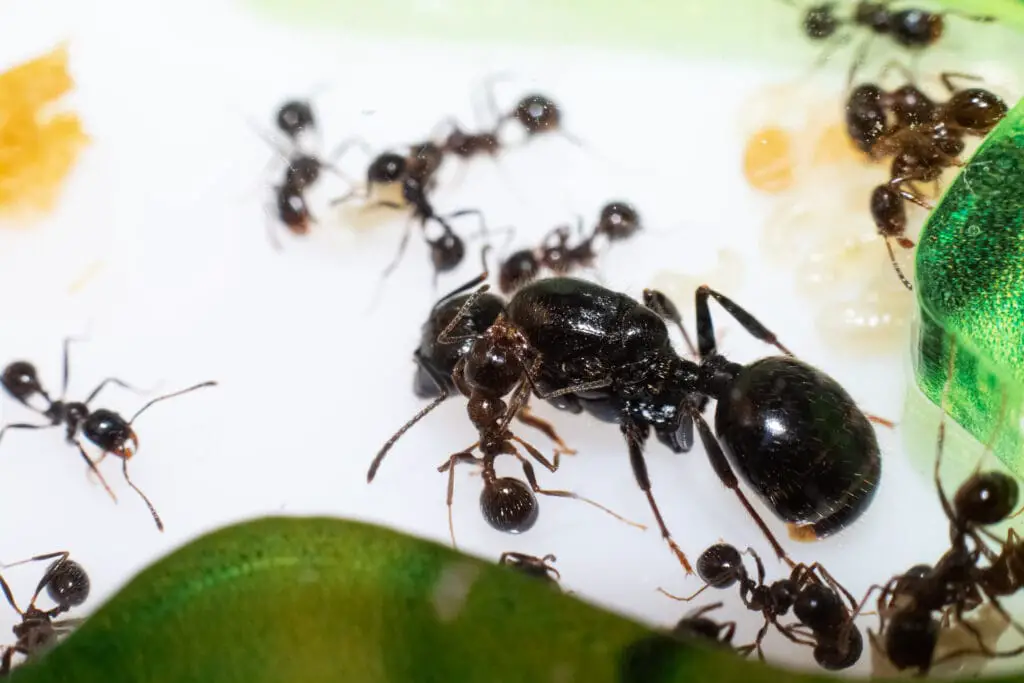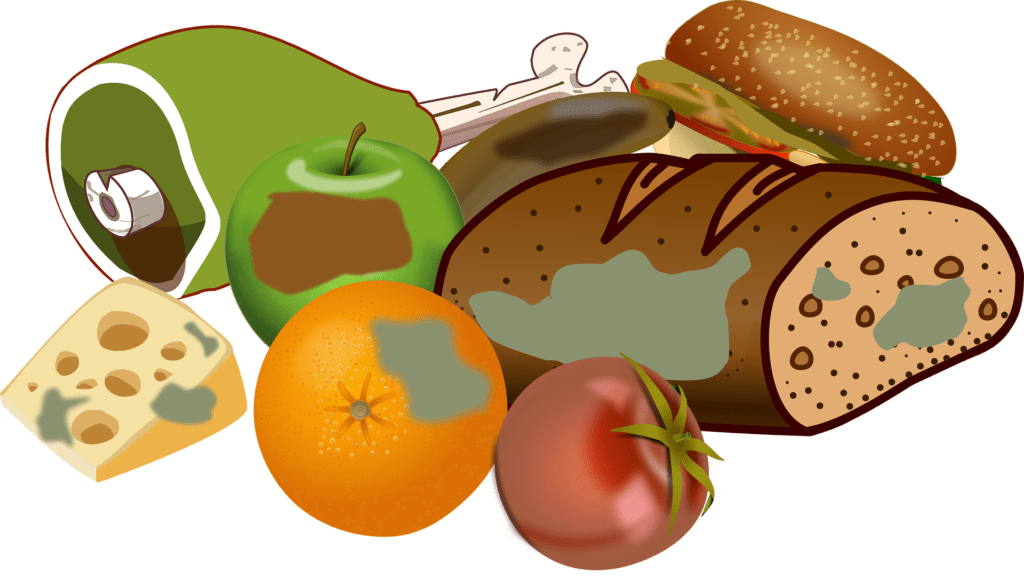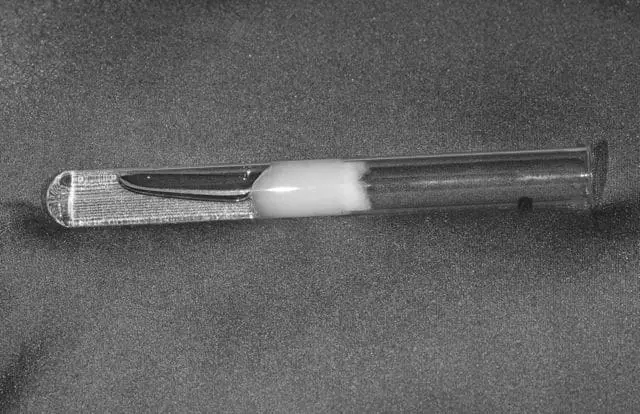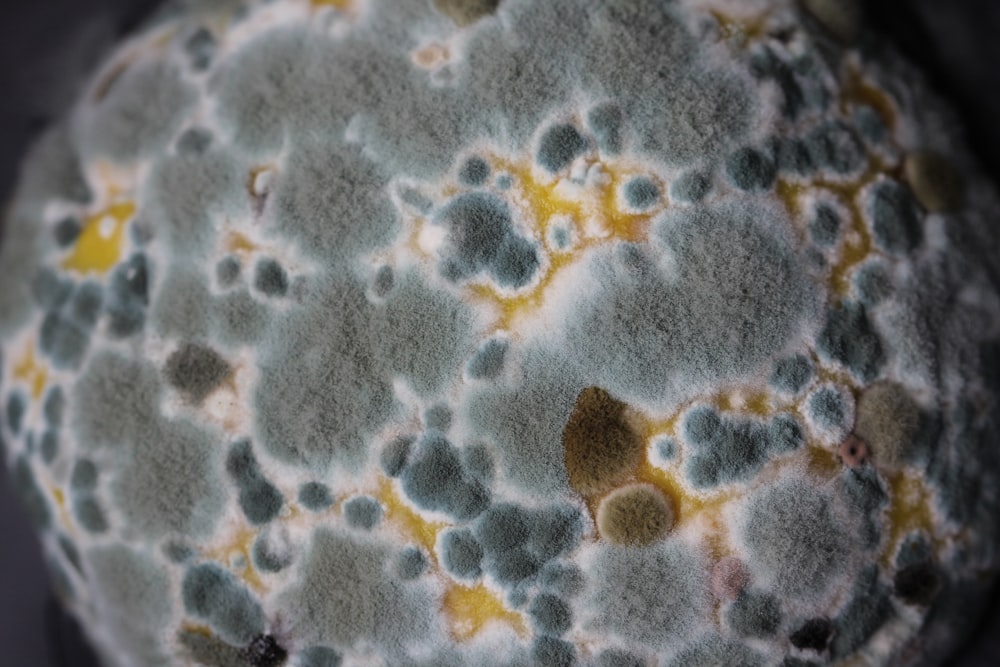One of the most aggravating things we hear from ant keepers is that they have mold issues.
While some confess never having mold problems or being able to come to terms with them quickly when they do, mold remains a concern for others over time, leading to individuals abandoning the hobby.
Some people even buy/build suitable habitats and have the same problems with their new ant farms.
Ant Keeping Mold serves as a guide and how-to to fix these common mold problems.
How do you deal with mold during Ant Keeping?
To deal with mold during Ant keeping, you have three options. You can remove the substrate and bake it, remove the substrate entirely and not replace it, or add Springtails to your ant farm. These insects feed on the mold and will live harmoniously with ants.
Mold is tough to deal with, especially when you consider that you will have to remove your ants before fixing the problems.
More information on mold and dealing with mold during ant keeping is below.
What is Mold?
Mold is a fungus comprised of microscopic creatures that can be found anywhere.
They come in various colors, including black, white, orange, green, and purple.
Molds are crucial because they break down leaf litter, plants, and trees. Molds flourish in wet environments and multiply by dispersing tiny, light spores through the air.
Each day, your formicarium is susceptible to mold.
This makes your ant enclosure a great target, as we keep our ant farm habitats moist and have decaying food particles spread throughout.
Mold spores are generally safe in tiny doses, but when they fall on a wet location in your house, they can begin to reproduce.
Mold spores can be discharged into the air, where they can be readily ingested.
This could raise some health concerns if you’re allergic to mold and inhale many spores.
Mold Favoring Environments
Both indoors and outside, mold can be found. Mold may get into your house through open doors, windows, ducts, and HVAC systems.
Mold in the air may stick to clothes, shoes, and pets, which can also be brought inside.

Mold spores will develop if they land in areas with a lot of moisture, like roofs, pipelines, walls, plant pots, or areas with flooding.
Molds are drawn to the same conditions as humans: warm temperatures and plenty of moisture.
Mold can start developing at temperatures as low as 60 degrees if there is at least 70 percent relative humidity.
That is why they seek wet settings such as those found in houses, a formicarium, and other structures.
You’re more prone to locate mold if you have a lot of wetness or humidity.
Subterranean termites, which munch on wooden supports, are also attracted to moisture.
If you have mold or pests, you first should tackle the cause of the moisture.
Defective roofs, leaking pipes, poorly ventilated bathrooms, spills, breezes, and your crawl area are just a few ways moisture may enter your home.
Mold thrives in many construction materials because they supply the proper nutrients.
Wet cellulosic materials, such as paper and paper goods, cardboard, ceiling panels, wood, and wood products, are especially favorable to mold formation. Mold may develop in various materials, including dust, paints, wallpaper, insulating materials, drywall, carpeting, fabric, and furniture.

What Does Mold Look Like
Individual mold colonies are incredibly small and hard to see without a microscope, but they can create noticeable patches on specific substrates once they emerge.
Mold is typically black, blue, or green in hue. Mold color is governed by various parameters, including type, nutrition supply, colony age, etc.
Black mold (technically known as Stachybotrys) is thought to be the most dangerous to public health of all mold kinds. (Source)
The type of mold will determine the method of mold removal, and it is, nevertheless, critical to evaluate it first.
Knowing what sort of mold you’re dealing with will be beneficial even after you’ve completed mold treatment.
How to Prevent Mold During Ant Keeping
The substrate for your formicaria’s nest must be carefully selected if you want to avoid mold during ant keeping completely.
Regarding typical materials, individuals who want to make their own formicaria that may prevent mold, wood, or plaster are at the bottom of the list for being “mold-resistant,” whereas Ytong, grout, and plastic stay at the top.
| Rank | Material | Reason |
| 1 | Plastic | Plastic is mold Resistant and incredibly easy to clean |
| 2 | Ytong | Ytong is also Mold Resistant and incredibly easy to clean, but heavier and more expensive than plastic |
| 3 | Wood | Wood is aesthetically pleasing but is susceptible to mold. Cheap and easy to clean |
| 4 | Plaster | Plaster isn’t great in an ant enclosure but is more mold resistant than sand |
| 5 | Sand | Tough to clean and very susceptible to mold. Would avoid if mold is the primary concern |
Mold can develop on any decaying organic matter, so even if you design a mold-resistant formicarium with plenty of air, there’s still a chance it’ll grow.
Ants require humidity and warmth to survive.
Sadly, these are the two most important factors that mold needs to flourish.
In addition, ants must eat, and mold may develop on almost anything that ants find and leave behind.

When ants carry food into a moist substrate and leave it there, you should be on mold alert.
How can we avoid the situations written above in Ant Keeping Mold?
- Wipe out the nest on a frequent basis.
- Use setups that can be cleaned easily and quickly.
- Section off an eating section that isn’t in the substrate.
Mold Treating Tips
| Treatment | When You’d Do It |
| Baking Substrate | In a rush and need a quick solution. |
| Removing Substrate Completely | Mold is a constant problem, and you are going to switch substrate |
| Springtails | Want a long-term natural solution |
Baking The Substrate To Remove Mold
Baking the substrate to remove the mold is a possible and quick solution.
Baking sand at 250°F for 30 minutes will usually remove the mold. This solution provides ant keepers with a quick way to treat mold in about an hour.
The downside to this path is that the mold usually does come back.
Once you replace the substrate back into the enclosure, there is a high chance that the mold will start growing again.
[amazon box=”B07W114VKY”]
Removing Substrate Completely
Removing the substrate from your formicarium is also a solution.
I would suggest only going to this step if mold has become a consistent problem.
Usually, this step will include changing the substrate to one higher on the list of anti-mold substrates above.
The downside to removing the substrate completely is you could potentially slow down the growth of your colony.
Removing the substrate will ruin any tunneling that the ants have done.
Also, some ant species bury their food (like harvester ants) before eating it.
Removing the substrate completely would shock the colony as they now have no place to bury their food.
Springtails in Ant Farm
This solution is a long-term and natural fix. Adding springtails to your enclosure will allow you to treat the mold problem long-term while adding a cool new aspect to your enclosure.
Springtails are insects that feed on fungi (Source).
This is good news for us, as our problem is their favorite food.
These tiny creatures will crawl around your enclosure, eventually eat all of the molds, and continue to eat them if the mold grows back.
Do Ants Increase the Chances of Mold In A Ant Farm?
The majority of ant species build shallow nests near the ground’s surface.
In a period of increasing wetness, the ants creating these holes in your home offer the ideal condition for mold to thrive.
Even the slightest gap may be a welcoming party for mold, even if you think your house is safe.
Mainly, ants finding and hiding decaying food will cause most of the mold seen throughout the house.
Since these ants will leave pieces lying around in hidden areas that can’t be cleaned up, mold will eventually follow.
Is it Possible for Mold to Kill Ants?
Mold outbreaks can kill entire ant colonies and can happen extremely fast.
However, most of the time, the ants can deal with this mold breakout and handle it themselves.
But in the unfortunate instance, the mold will kill off the ants.
For example, mold has killed off this guy’s full nest in under 24 hours. (Source)
Mold in Test Tube
Sometimes, while your ants develop in a new test tube, you may notice some mold.
Just like in the ant farm, the ants can handle small outbreaks.
The outbreaks will mostly happen around the cotton ball or dead insects you feed your ants.

One strategy that works great for preventing mold is not giving any food and only providing tap water to fully claustral queens.
Since they do not need any help during this stage while they lay eggs, we take advantage and keep the test tube sealed.
If your queen is semi-claustral, you’ll need to ensure that you’re cleaning out the dead insects quickly.
Again, do not freak out about a bit of mold.
[amazon box=”B07Z3DNG21″]
Final Thoughts on Getting Rid of Mold
If you’ve found some mold, do not immediately freak out.
We’ve listed a ton of different steps that you can take to handle it and keep your ant colony safe and happy.
What we do not want you to do is something extremely drastic. You’ll need to see A LOT of mold to remove the ants from the formicarium.
Try a couple of other suggestions before you give up on that formicarium.
If it’s early on, try and take care of it by wiping it down.
Mold is awful to deal with, but if you were running into some other problems, we probably go over it here in this guideline: Beginner Friendly Ant Keeping Guide
Happy Keeping!


